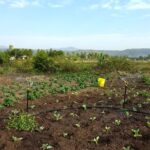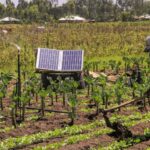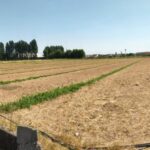A great number of people are turning towards solar farm. This is due to its numerous advantages. Powering irrigation pumps with solar energy comes with many advantages:
-
- Lower spending on energy
-
- Reduced carbon emissions
-
- Low maintenance costs
The extent to which these benefits can be realised depends on how you set up, use and look after your system.
The great thing is that there are some very simple ways to dramatically increase your solar efficiency… and we’ll run through them below.
1. Pick the right size solar panel keeping in mind the area of your solar farm
Deciding on the right size of solar panel for your system can feel like a minefield. With pumps on the market having solar panels ranging from 10W for tiny pot plant systems to several hundred watts powering large pumps for full farm systems. Even once you’ve decided on your pump your supplier may have a range of solar panel sizes with each product…
At Futurepump we typically offer three solar panel variants with our pumps, these being a small panel (60W for the SE1, 120W for the SF2), a double solar option (120W for SE1, 240W for SF2) and ‘no solar’ – a pump only unit for you to connect your own third-party solar array.
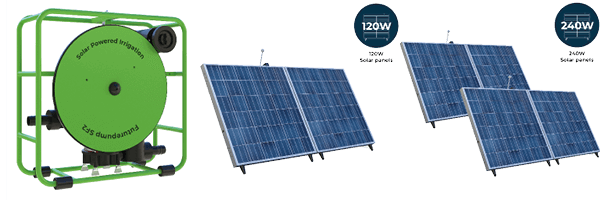
The Futurepump SF2 with it’s solar panel options
We have selected these variants so you can choose the best option for your situation in terms of expense and volume of water pumped. If you live in a location where there is a high amount of solar energy available, such as near the equator, our smallest solar panel option will be more than enough to power your pump
Oversizing your panel (choosing a higher wattage of panel) is for situations where the sun is hazier or you want to pump on cloudier days. This is because the bigger panel area allows more of the sun’s energy to be collected and turned into electricity.
In the most sunny regions, it does not make financial sense to oversize your panel. This is because there is an upper maximum set by the pump motor and you will be making enough energy with the smallest option. The increase in water you are pumping is not enough to offset the increased investment.
2. Position your solar panels correctly in your solar farm
Positioning of your solar panels is the most important thing when setting up a solar pump on your farm. You must choose a spot where there is zero shading from trees, grasses, shrubs or crops and it must be pointed at the sun.
Shading
Even the smallest amount of shading on your panel can affect the amount of energy it can generate. Depending on the exact circumstances, even if only 1% of a panel is shaded, it is possible to lose 50-80% of the power.
Study your chosen location for a whole day as the sun moves around and make sure that shade does not get cast over it as this will limit your daily pumping capacity. It is especially pertinent in dry areas.
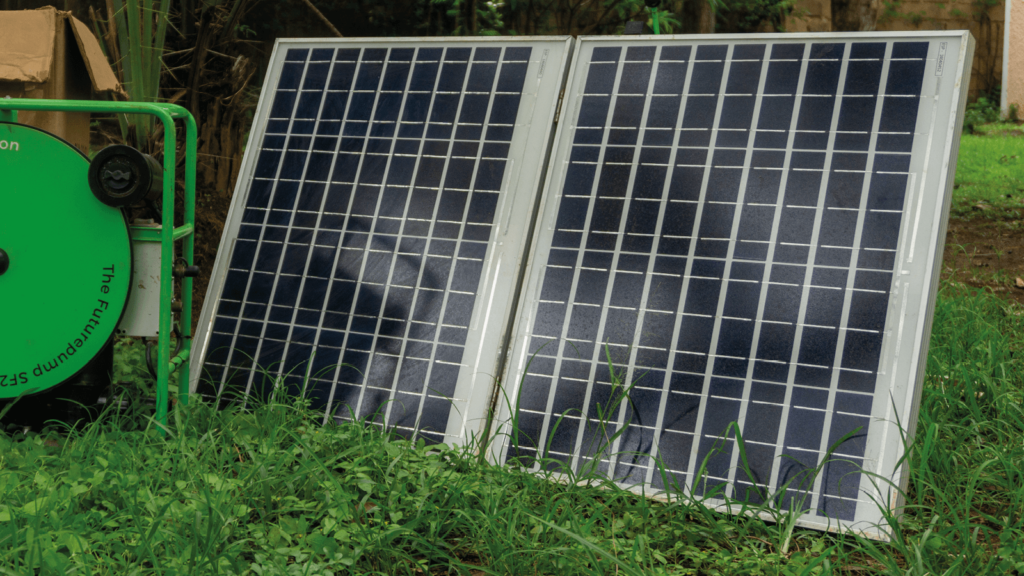
Solar panel angle
First things first, make sure that your panel is facing the sun when you are using it.
If you will be with your panel throughout the day and it is not fixed in position, you will be able to adjust it to make sure that it is receiving the most sunlight possible. As the sun rises, gradually move the panel to be more horizontal, and as it sinks towards the horizon position it more vertically.
If you have a fixed solar panel then you will want to choose where you fix it carefully. Consider the time of day that you will be wanting to use the energy the most and position it to receive the most sunlight then. With a fixed array you will not be able to easily adjust it through the day, so you may find that your pumping day is reduced.
3. Use your solar energy efficiently
Solar panels produce the most energy during the sunniest periods – at and around midday and more on days with clear skies rather than clouds. These are the times when you can get smart and make the most use of the energy.
Even if you don’t want to irrigate in the full intensity of the midday sun, you can make use of the energy to move water to more convenient sites on your farm. This could be to a water pan for storage or a raised tank which will allow you to irrigate with gravity when the sun is not shining.
Futurepump solar pumps also come with a handy USB charger for powering small appliances such as mobile phones or torches. Charge these up when you have excess solar energy.
4. Keep your panels working at maximum efficiency
In general, solar panels have long lifetimes (with many having up to 25 year warranties) and require little maintenance. However, there are some things you can do to make sure they are working at their best.
Keep them clean
A layer of dirt and grime acts as a thin shade over the whole panel surface. Regularly cleaning your panels with water can increase the energy you get from them by around 3%. It might not sound much, but why waste free energy!
Make sure you don’t use abrasive cloths or cleaning products as these can damage the glass surface of the panel, a soft cloth and water will do.
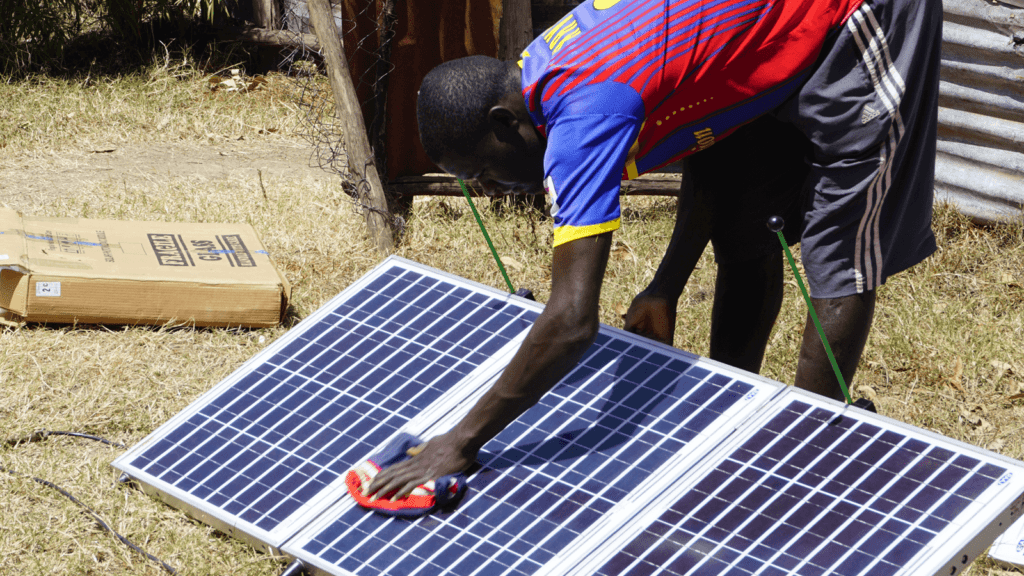
Check they are not shaded
This relates to what we have said above about setting up your panels, but regarding maintenance. If you have a static array of panels make sure that trees and foliage have not grown up to shade the panels. Keep plant growth near the panels chopped back and you won’t have a problem.
Move them carefully
If you have portable solar panels then take care when moving them around your farm. The front of the panel is glass and can be broken by hitting or standing on the panel.
And that’s it. As solar panels do not have moving parts there is very little wear and tear that can happen within the product itself. Panel maintenance is more about external factors on your farm.

Our most popular solar water pumps – SF2 (left) for two acres and SE1 (right) for one acre
At Futurepump we are experts in the manufacture of long-lasting solar irrigation pumps. We want to help smallholder farmers across the world get access to efficient and reliable technologies to grow crops sustainably all year round.

 Cart is empty
Cart is empty 
